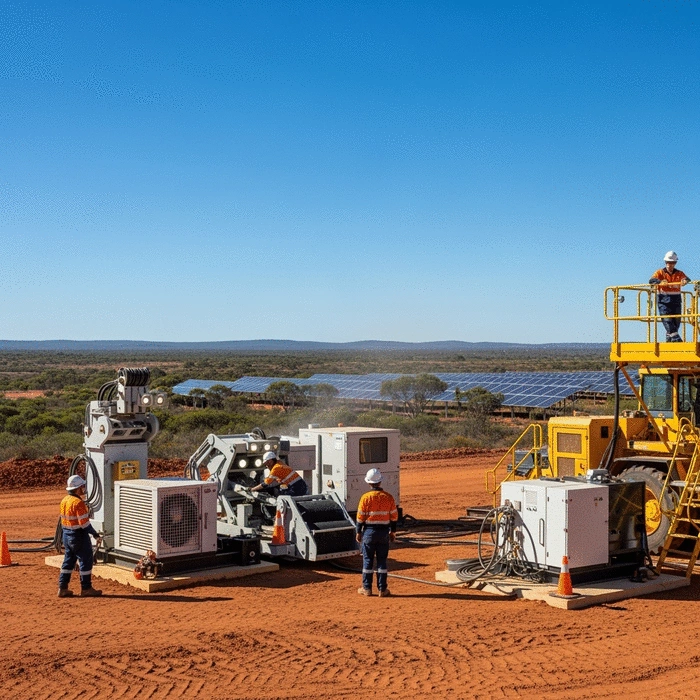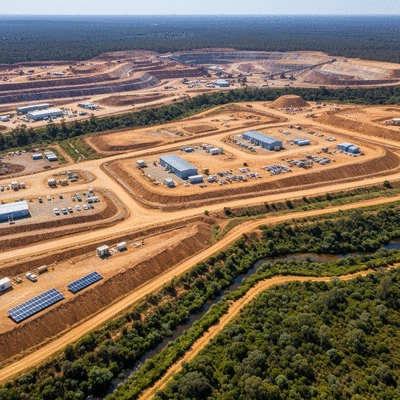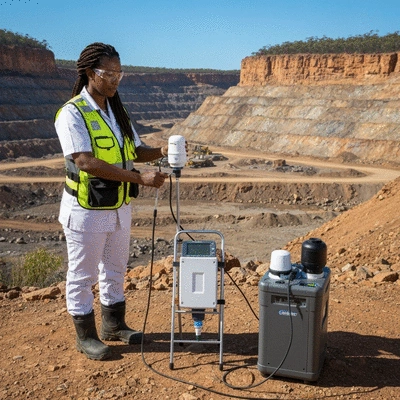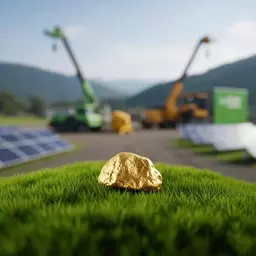Barriers to Adoption
- •High Initial Costs
- •Lack of Awareness
- •Resistance to Change
- •Limited Access to Technology
Join Madeline Harper's community for exclusive updates on Australian gold mining trends, exploration, and investment opportunities.
Posted on: 2025-10-22
By: Madeline Harper
In a world increasingly focused on sustainability, the gold mining industry finds itself at a crossroads. What if adopting eco-friendly practices could not only benefit the environment but also drive profitability? This article delves into the nuances of sustainable gold mining in Western Australia, exploring the practices that can pave the way for a more responsible industry.
This visual summarizes the key aspects of sustainable gold mining in Western Australia, including essential practices and common barriers to their adoption.
At Gold Mining Insights, we understand that sustainable practices are essential to the future of the gold mining industry. In Western Australia, where gold mining is a significant economic driver, implementing sustainable methods isn't just good for the planet—it's good for business too! So, what exactly does sustainable gold mining look like? Let’s dive in!
Sustainable gold mining practices focus on minimizing environmental impact while maximizing economic benefits. This involves using methods that not only preserve natural resources but also promote social responsibility. Key components include: efficient resource use, community engagement, and regenerative practices. By adopting these practices, mining companies can improve their reputation and foster public trust. It’s about creating a balance that benefits all stakeholders involved! For a deeper understanding of how technology is shaping the industry, explore AI's Impact on Gold Mining.
The importance of sustainability in mining cannot be overstated. As we move towards a more environmentally conscious world, investors and consumers alike are demanding more from mining companies. Sustainable practices not only help in compliance with regulations but also:
As someone who has spent over a decade in the Australian mining sector, I’ve seen firsthand how these sustainable practices can lead to long-term success. The question is, are you ready to embrace this shift?
In Western Australia, various regulations help guide the mining industry toward more sustainable practices. The Environmental Protection Act 1986 is a cornerstone, laying down clear guidelines for environmental assessments. Additionally, companies must adhere to: Mine Closure Plans, Environmental Management Plans, and the Native Title Act. These regulations create a framework for accountability and encourage mining companies to adopt practices that prioritize both the environment and local communities. Staying informed about these regulations is key for any stakeholder in the gold mining industry! For insights into how renewable energy is being integrated into these practices, consider reading about renewable energy in gold mining.
Did you know? Implementing sustainable mining practices can not only enhance your company's reputation but also lead to cost savings in the long run. By investing in efficient technologies and engaging with local communities, mining companies can create a positive feedback loop that benefits both the environment and their bottom line.
Sustainable gold mining is not without its obstacles. As the industry strives to implement eco-friendly practices, several barriers can impede progress. Understanding these challenges can help stakeholders—from miners to investors—navigate the complexities of sustainable mining.
Key barriers include financial constraints, technological limitations, and a lack of industry-wide standards. Many companies may see sustainable initiatives as an additional expense rather than a vital investment for long-term profitability and environmental stewardship. It’s essential for all of us to recognize that overcoming these hurdles is crucial for a sustainable future.
Several barriers can hinder the adoption of sustainable practices in gold mining. Here are some of the most prevalent:
As I’ve seen in my work at Gold Mining Insights, these barriers can be overcome with collaboration and commitment from all industry participants. Addressing these issues head-on is critical for fostering a sustainable mining environment.
Regulatory frameworks play a significant role in shaping mining practices, but they can also pose challenges. Stringent regulations can sometimes delay project timelines, impacting profitability and investor confidence. However, these regulations are essential for safeguarding our environment and ensuring ethical operations.
It's important to advocate for balanced regulations that promote sustainability while allowing economic growth. Here are some critical aspects to consider:
Finding ways to simplify regulatory processes while maintaining stringent environmental safeguards is key for the future of sustainable gold mining. My hope is that the industry can move toward a more streamlined approach that encourages innovation. For a broader view of the economic landscape, check out Australian Gold Mining Market Insights.
Environmental Impact Assessments (EIA) are crucial tools in gauging the potential impacts of mining projects on the environment. They help ensure that companies are aware of their responsibilities and the ecological footprints of their actions.
Here are some essential elements of an effective EIA:
As I continue to follow developments in this sector, I’ve seen how rigorous EIAs can empower mining companies to operate responsibly while also gaining community support. Together, we must champion practices that protect our environment while allowing for the economic benefits that mining can bring.
Sustainable gold mining involves minimizing environmental impact and maximizing economic benefits through practices like efficient resource use, community engagement, and regenerative exercises. It aims to balance ecological preservation with economic viability and social responsibility.
Sustainability is crucial because it enhances brand loyalty, attracts investments from ESG-focused funds, and reduces operational risks and costs. It also ensures compliance with regulations and fosters public trust by meeting growing demands for environmentally conscious practices.
Key regulations in Western Australia include the Environmental Protection Act 1986, which sets guidelines for environmental assessments, Mine Closure Plans for site rehabilitation, Environmental Management Plans for impact management, and the Native Title Act to respect Indigenous land rights.
The main barriers include high initial costs for new technologies, a lack of awareness about long-term benefits, resistance to change within established companies, and limited access to innovative technologies, particularly for smaller mining operations.
EIAs are vital for evaluating the potential environmental impacts of mining projects. They involve baseline studies, public consultation, the development of mitigation strategies, and monitoring plans to ensure responsible operations, transparency, and community support.
Here is a quick recap of the important points discussed in the article:



 As we gear up for the investment opportunities of 2025, understanding the dynamics of the Australian
As we gear up for the investment opportunities of 2025, understanding the dynamics of the Australian
 In an era where technology meets tradition, the gold mining industry is at the forefront of innovati
In an era where technology meets tradition, the gold mining industry is at the forefront of innovati
 What does the future of gold mining look like, and how can we ensure it is sustainable? As the indus
What does the future of gold mining look like, and how can we ensure it is sustainable? As the indus